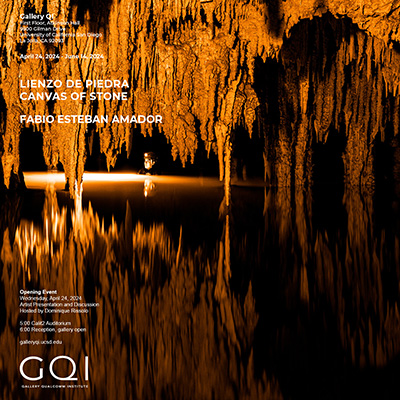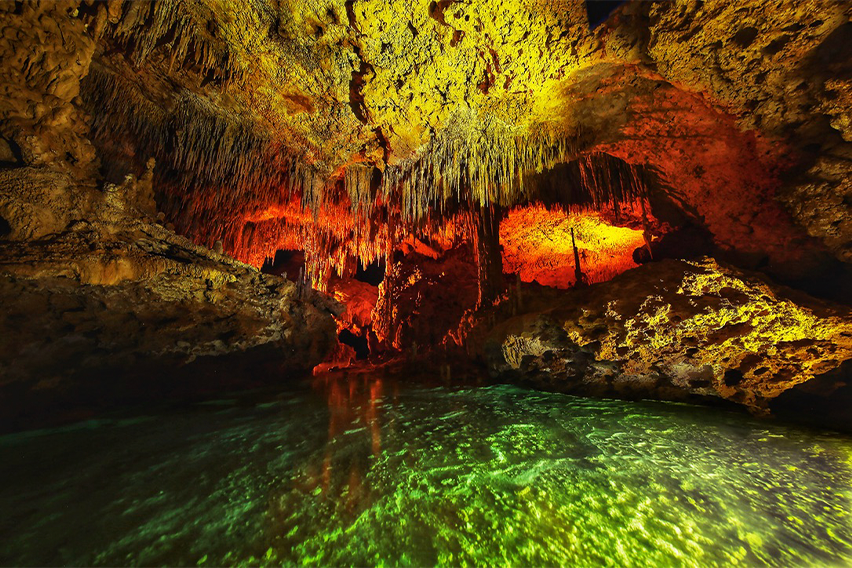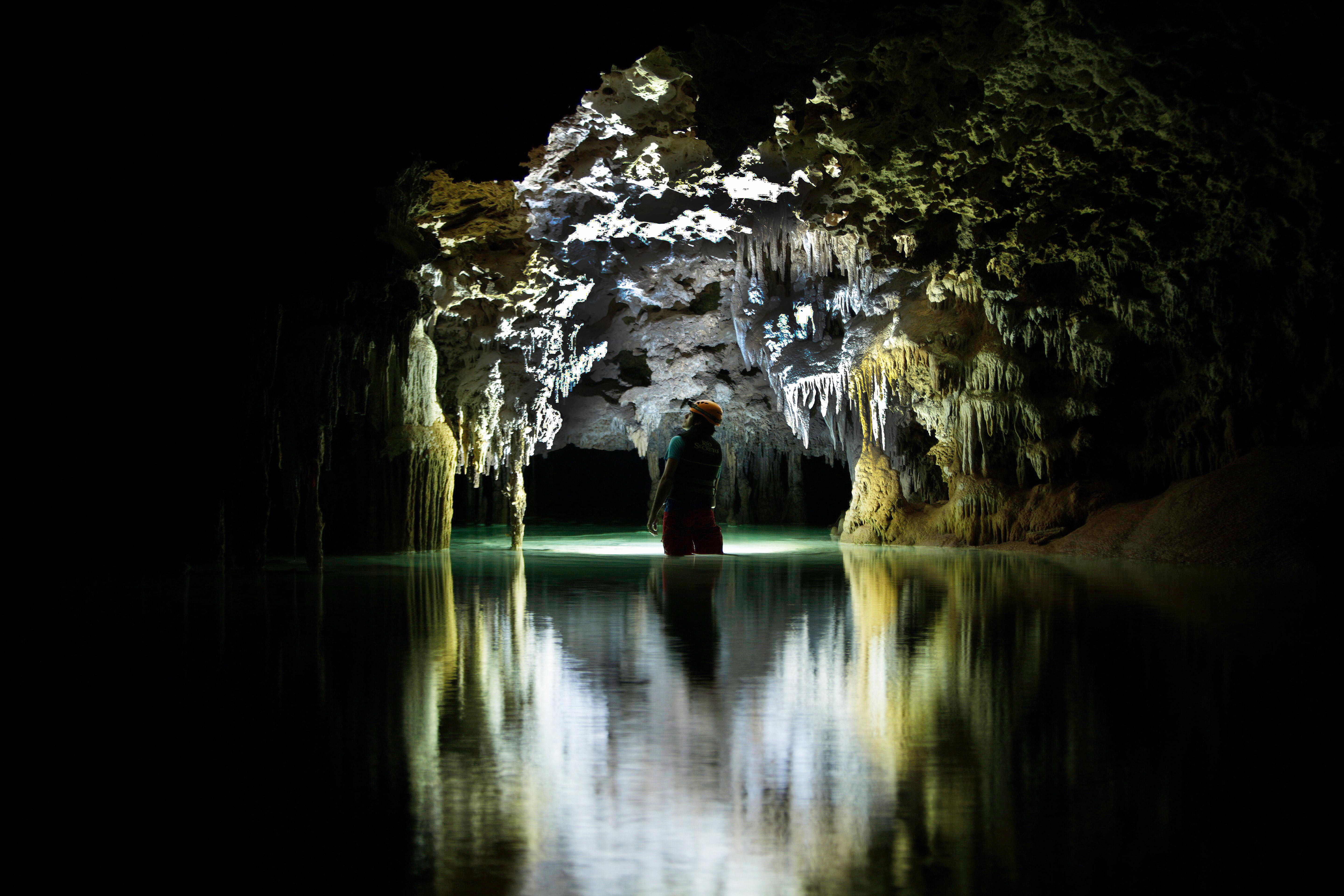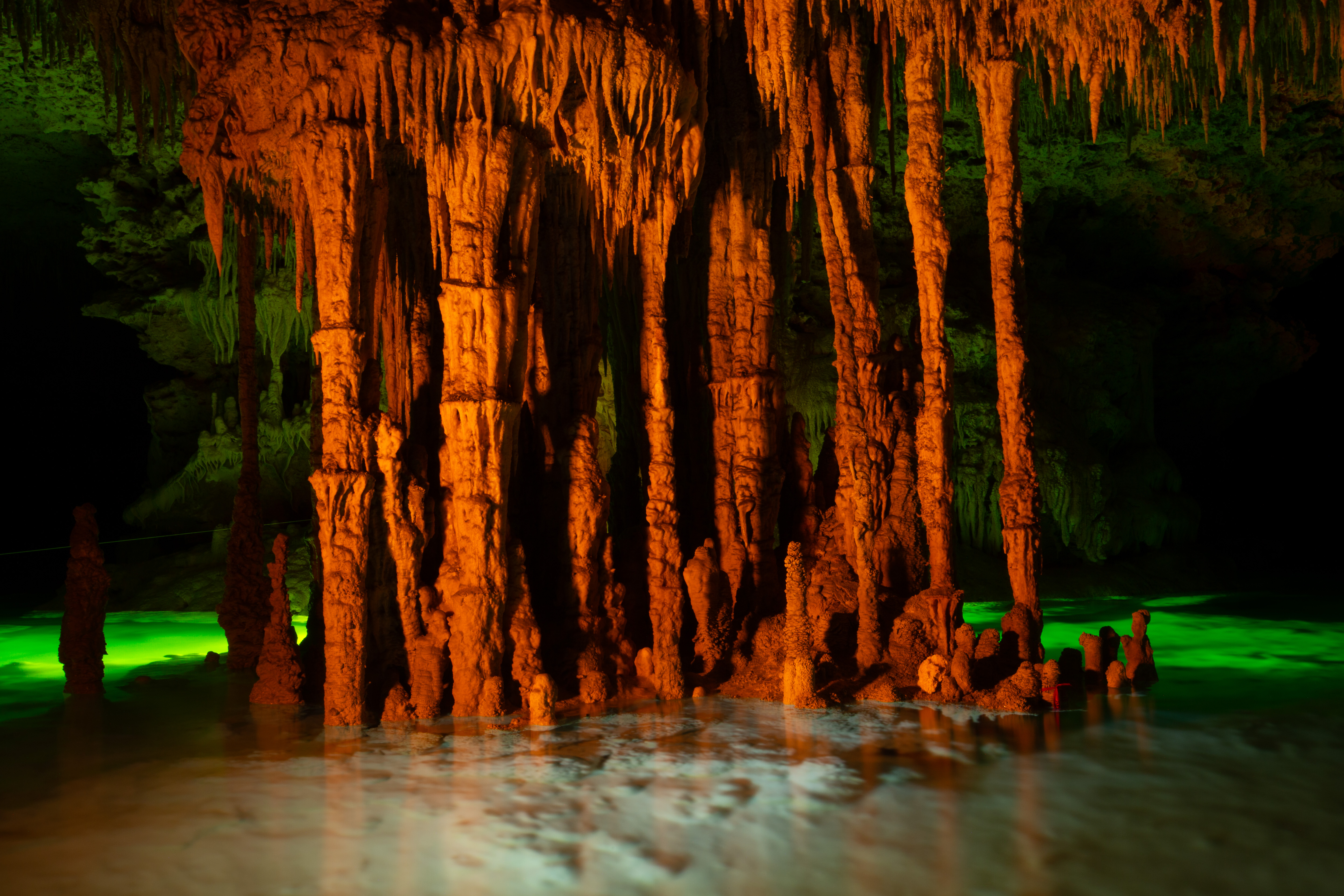Opening Portals to the Underworld
New Gallery Exhibit at the UC San Diego Qualcomm Institute Reveals Ancient Maya Caves, Heritage
Story by:
Published Date
Article Content
On Wednesday, April 24, the Gallery QI at UC San Diego’s Qualcomm Institute (QI) unveils a new photographic exhibition invoking Maya mythology, ritual and culture in Quintana Roo, Mexico.
Created by archaeologist and visual artist Fabio Esteban Amador, the exhibit, called “Lienzo de Piedra” / “Canvas of Stone,” captures caves long-considered by the Maya to be entrances to the underworld. These caves offer archaeologists the chance to study ancient Maya culture with a specific focus on ritual and the afterlife.

Like other landmarks in the region, preservation of the Pool Tunich cave system faces challenges from nearby infrastructure projects and a changing landscape.
Over the course of one month, Amador captured colorful images of Quintana Roo’s Pool Tunich cave system using underwater lights, strobes and tinted gels. His work showcases how art and technology, together, can record culturally sensitive spaces while transporting viewers outside of their daily experiences.
Amador partnered with QI researchers, El Centro Investigador del Sistema Acuífero de Quintana Roo (CINDAQ), Mexico’s National Institute of Anthropology and History and the cave’s steward, Grupo Rio Secreto, to document these at-risk heritage sites.
QI researchers, including QI Research Scientist Dominique Rissolo and Data Systems Analyst Scott McAvoy, transformed photographic and 3D data into navigable, 3D maps of the cave. Visitors to the “Lienzo de Piedra”/ “Canvas of Stone” exhibit will be able to interact with this digital recreation of the cave system, in addition to viewing the cave’s photographs.
“Our shared goal is to shine a light on at-risk cultural heritage places to engender understanding and spur conservation efforts,” said Rissolo, who is also a member of the Cultural Heritage Engineering Initiative (CHEI) at QI. “Fabio’s work connects and communicates with people outside the world of more traditional archaeological research.”
Amador’s portfolio focuses on Maya art, culture and iconography throughout Mexico, Honduras, Guatemala, and his native El Salvador. He is a founding member of Fundación OLAS, an organization dedicated to building resiliency and sustainability in the documentation of submerged archaeological sites in Latin America and the Caribbean. Previously, he served as a program and science officer for the National Geographic Society and as a host to National Geographic’s television series “Mysteries of the Underworld.” His work has appeared in National Geographic Magazine, iWatch Magazine, Tres Tiempos Magazine, the National Geographic Museum, Museo Nacional de Antropología Dr. David J. Guzmán in San Salvador, the Museum of the City of New York and National Geographic’s online Explorer’s Journal.
“Lienzo de Piedra”/ “Canvas of Stone” opens Wednesday, April 24 at 5 p.m. at the Gallery QI in Atkinson Hall, with a presentation and discussion with Amador. The exhibit will be on public display Monday through Friday, noon to 5 p.m., from opening night through Friday, June 14.
Gallery QI is an initiative of UC San Diego’s Qualcomm Institute, which harnesses technology to jumpstart innovation in areas including culture, energy, the environment and health. The gallery is located on the first floor of Atkinson Hall, on the UC San Diego campus at the corner of Voigt Drive and Equality Lane.
All Gallery QI events are free and open to the public. RSVPs for opening night are requested to galleryqi@ucsd.edu.
Share This:
You May Also Like
Stay in the Know
Keep up with all the latest from UC San Diego. Subscribe to the newsletter today.






